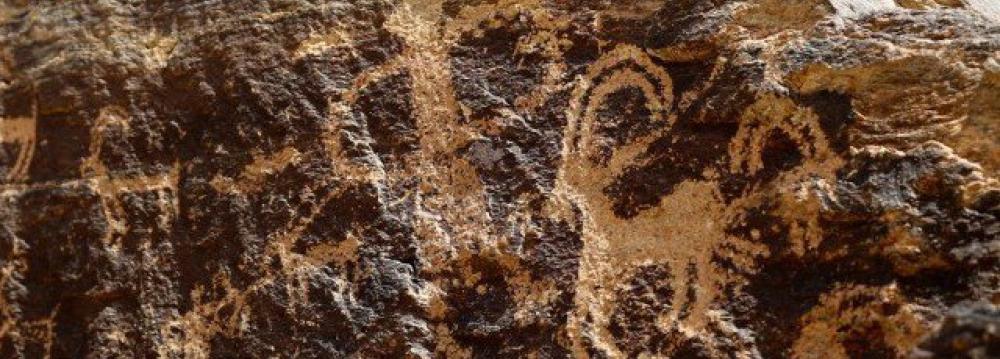An Iranian archaeologist has spent years across the country’s hills and desert plains to uncover ancient rock art that could be among the oldest in the world.
Now he hopes that renewed ties with the West after years of international isolation could help decipher its mysteries.
Outside the town of Khomein in central Iran, Mohammed Naserifard points out to the long curled horns of a 4,000-year-old ibex deer scratched into a flat stone up a hillside. A journey through valleys and up steep slopes reveals dozens more images of ancient hunters, tribal dances, deities and beasts, reports AFP.
All are thousands of years old, but some of the markings -- such as a line of cup-marks that may have been used in religious ceremonies -- could be much older. Dutch enthusiasts who visited the area with Naserifard in 2008 dated the cup marks to more than 40,000 years ago, putting them among the oldest rock art on earth.
But getting definitive data has been all but impossible. “Sanctions have deprived us of the technology,” Naserifard told AFP.
“We hope with the situation improving now, we can soon bring this technology to Iran and gain more accurate and scientific information on these engravings.”
‘Finding a Treasure’
One day in 2002, “We were on a picnic in the hills outside Khomein. I went wandering and observing the rocks in the valley and I found a rock full of shapes,” he recalled. “It was like finding a treasure.”
He estimates he has since travelled more than 700,000 km across two dozen provinces, unearthing some 50,000 ancient paintings and engravings.
Naserifard teaches at a local university, and his discoveries have been catalogued by the Bradshaw Foundation, a Swiss NGO specializing in rock art, bringing them international attention.
“His work is really important -- there have been these blank spots on the map that we are finally starting to fill in,” said Genevieve von Petzinger, a Canadian cave art expert and author of “The First Signs: Unlocking the Mysteries of the World’s Oldest Symbols”.
Naserifard’s discoveries support the growing evidence that humans may have started to develop a common art tradition before leaving Africa, which might explain why the same themes and shapes have turned up in sites as far-flung as California, Spain and South Africa.
Iran could be a really important part of the puzzle. It is a very strategic location -- humans migrated through there heading both east and west,” said von Petzinger.


